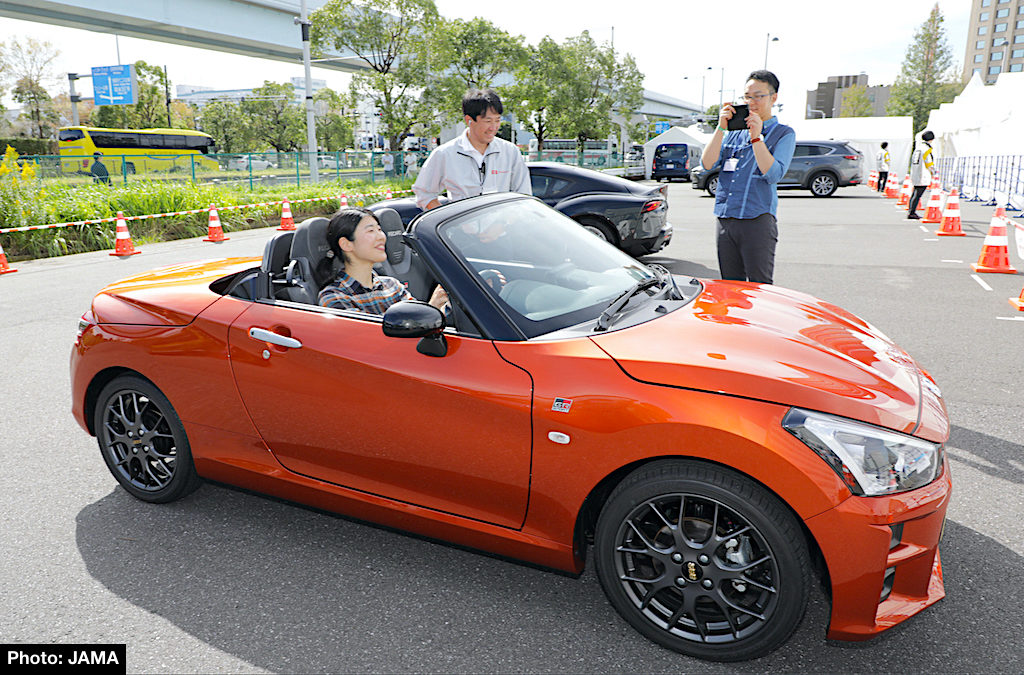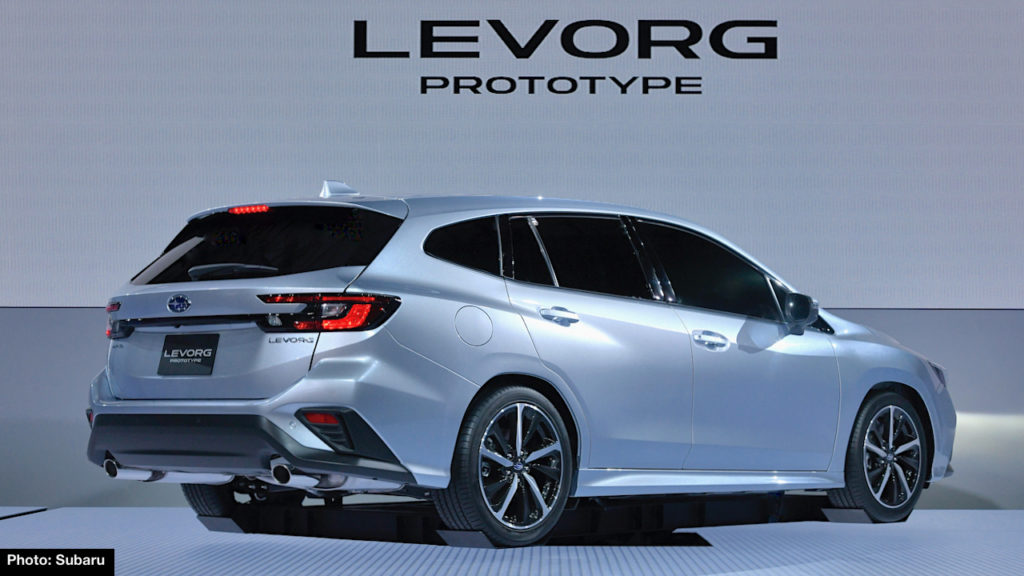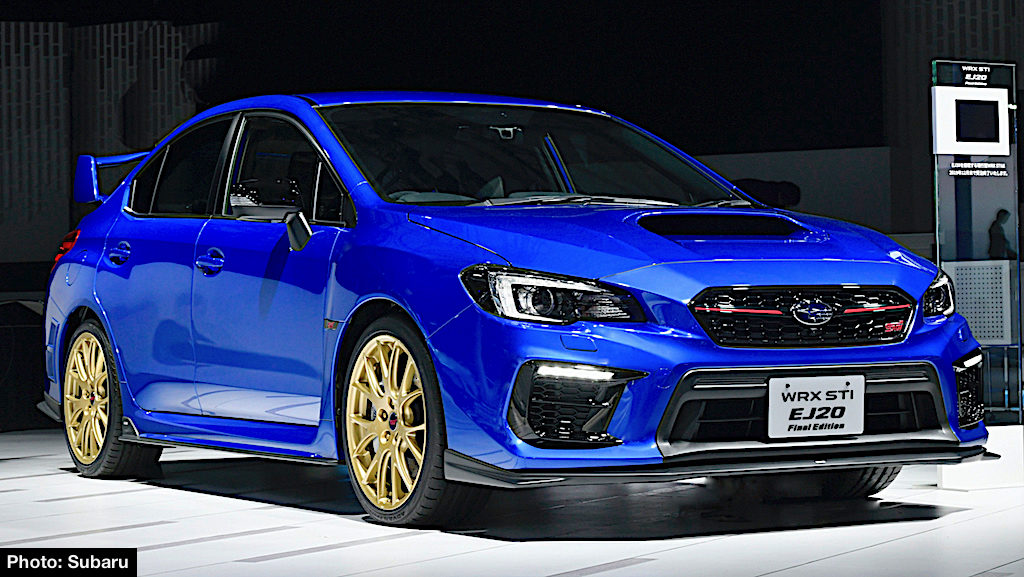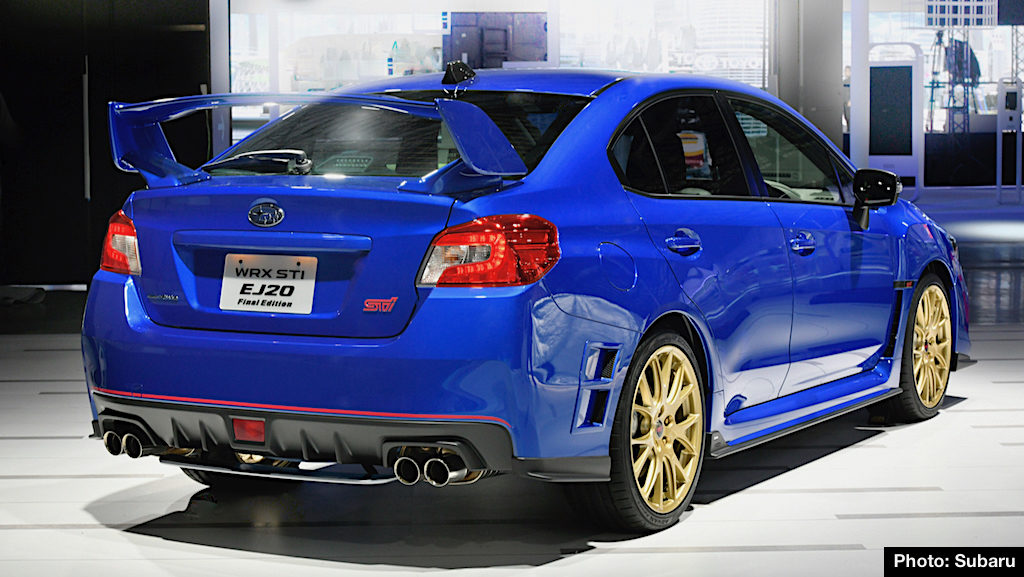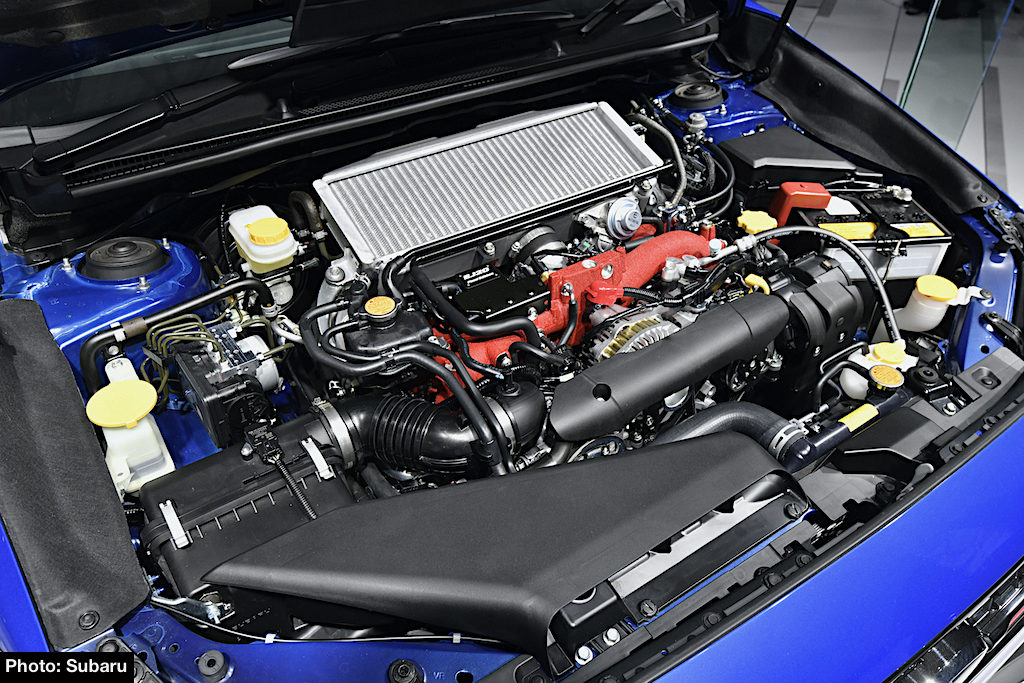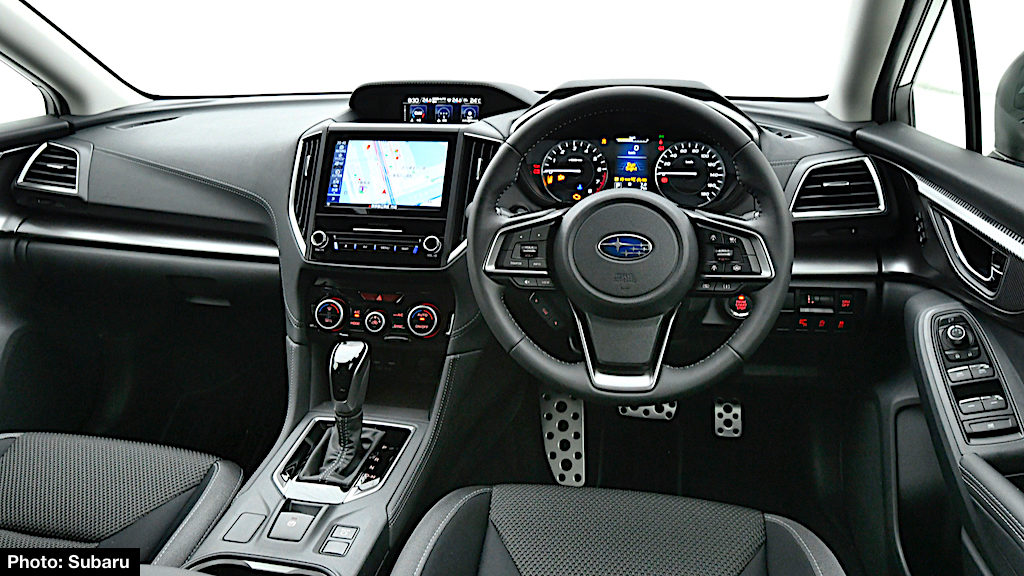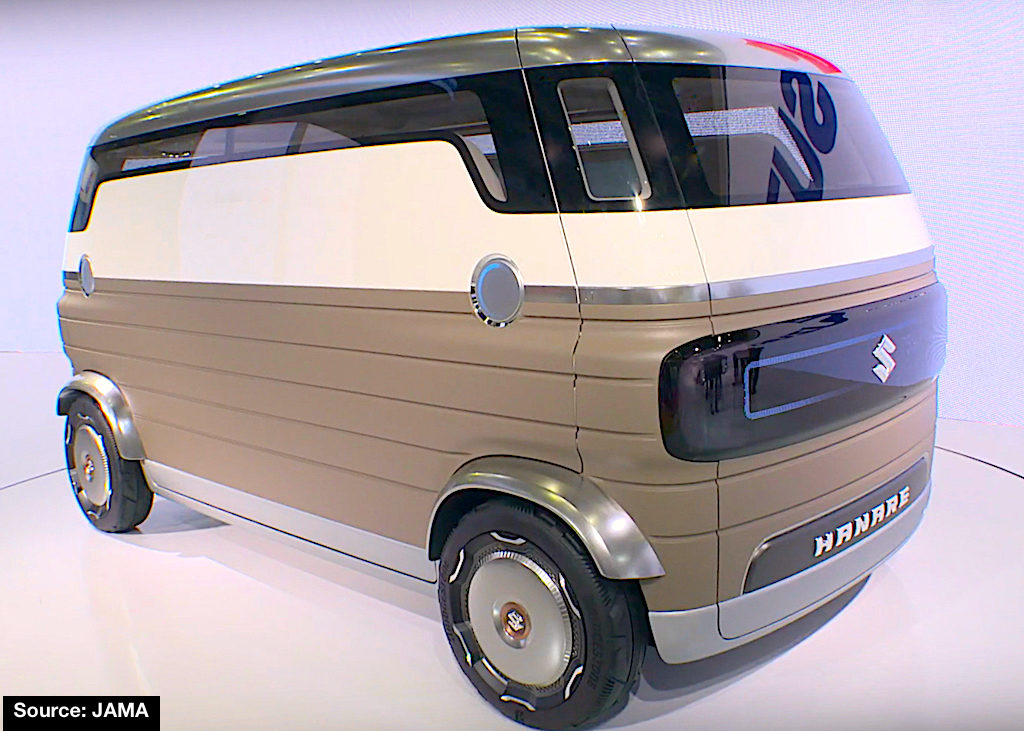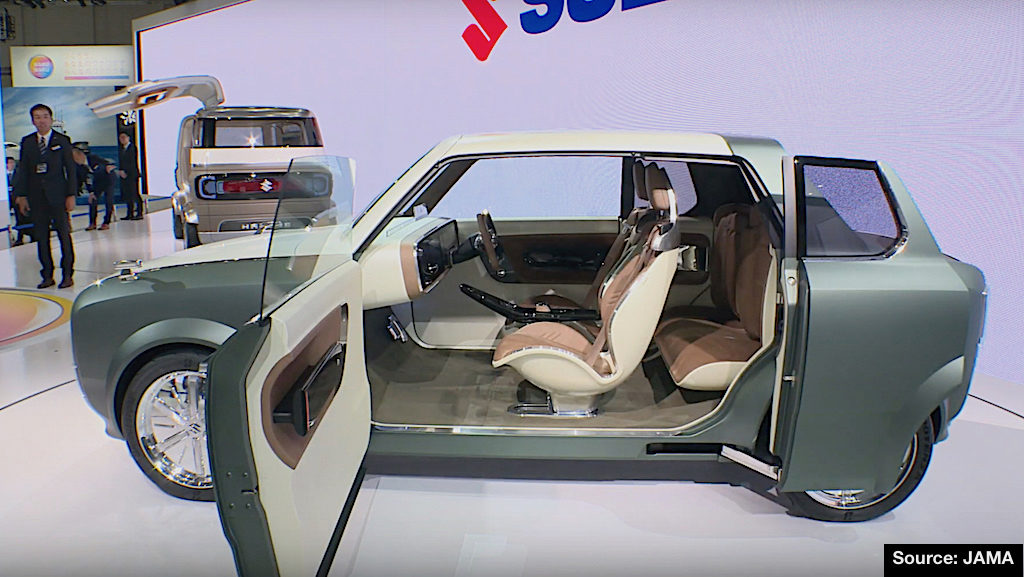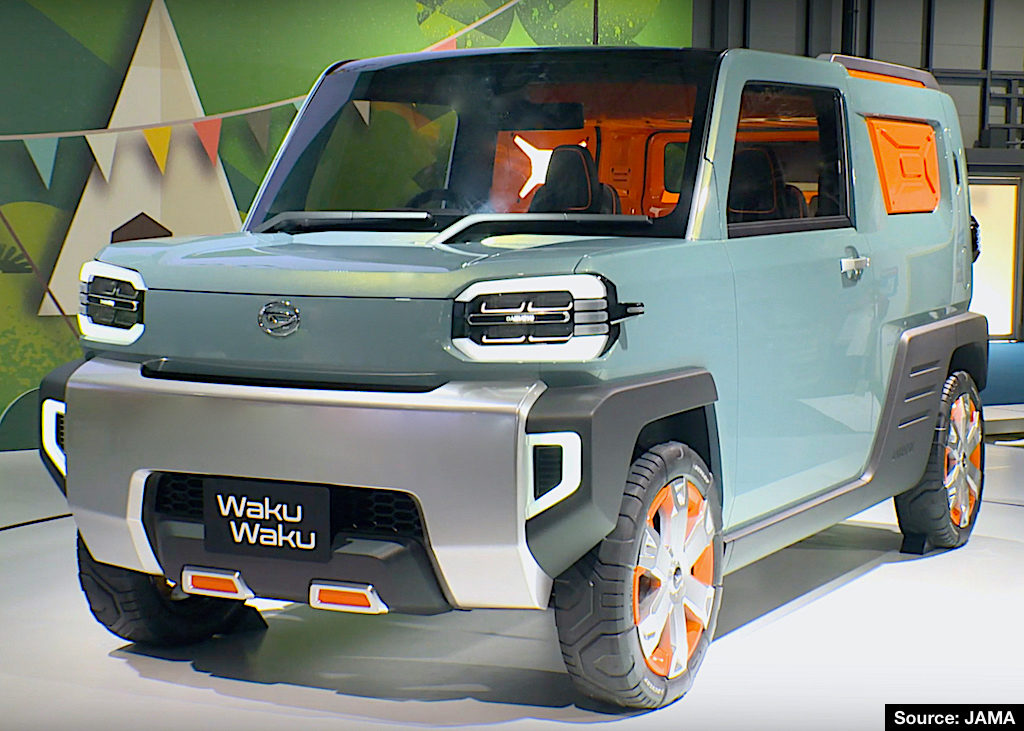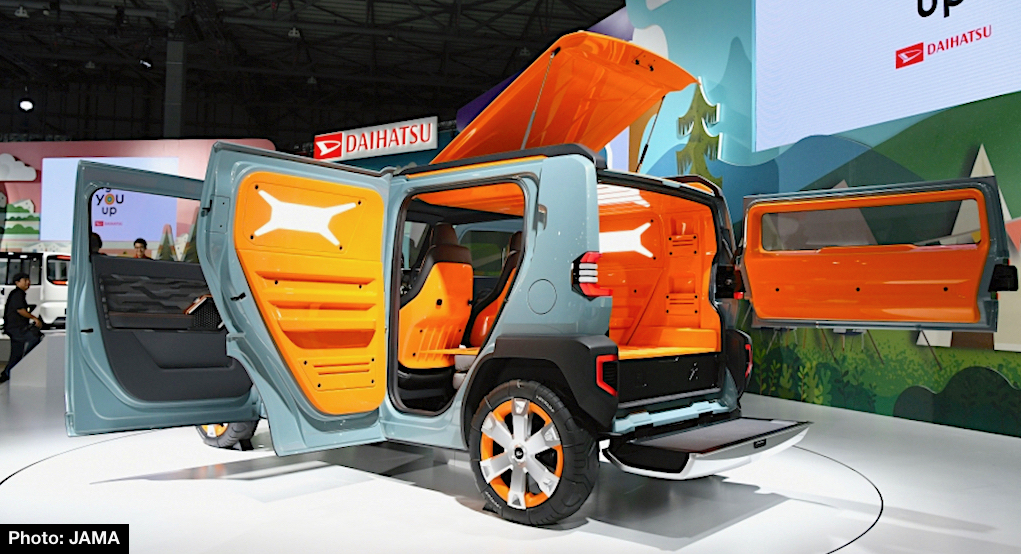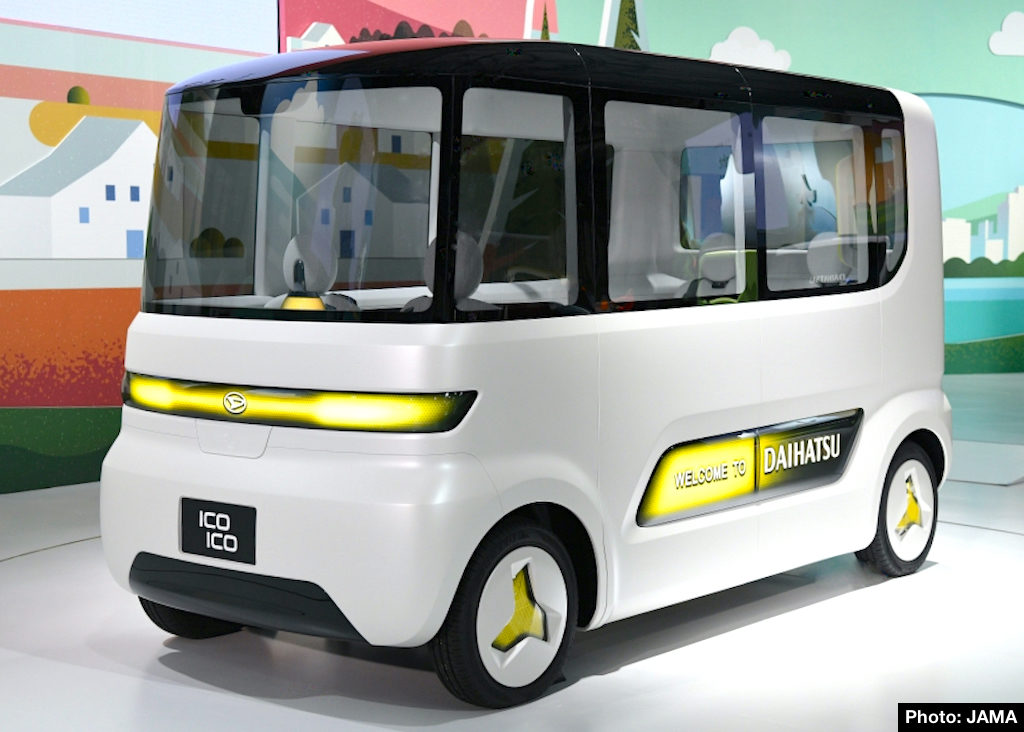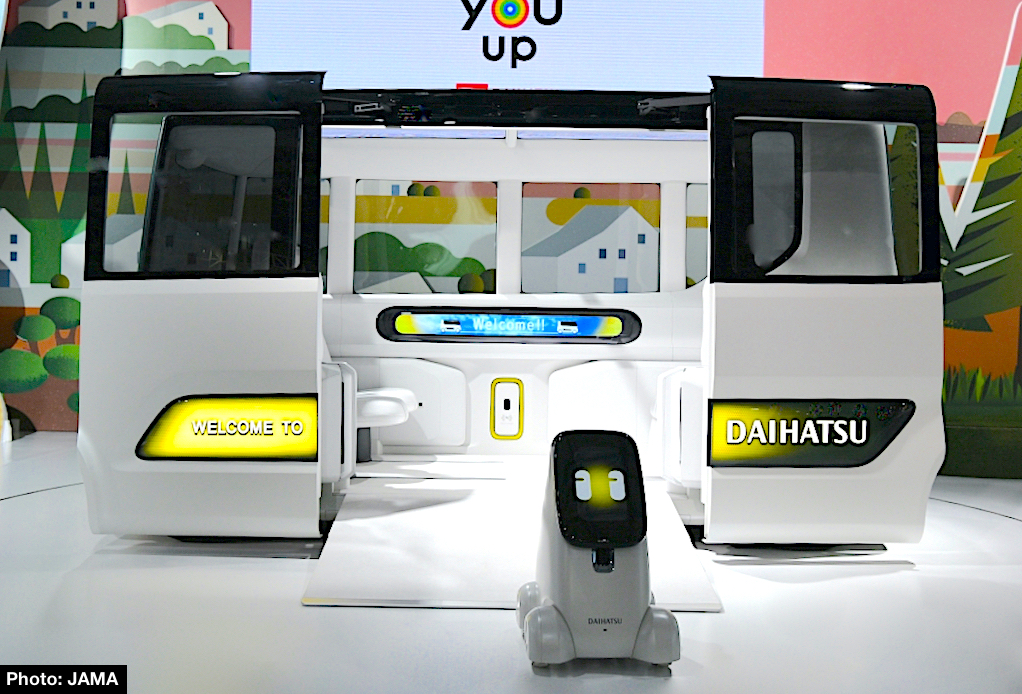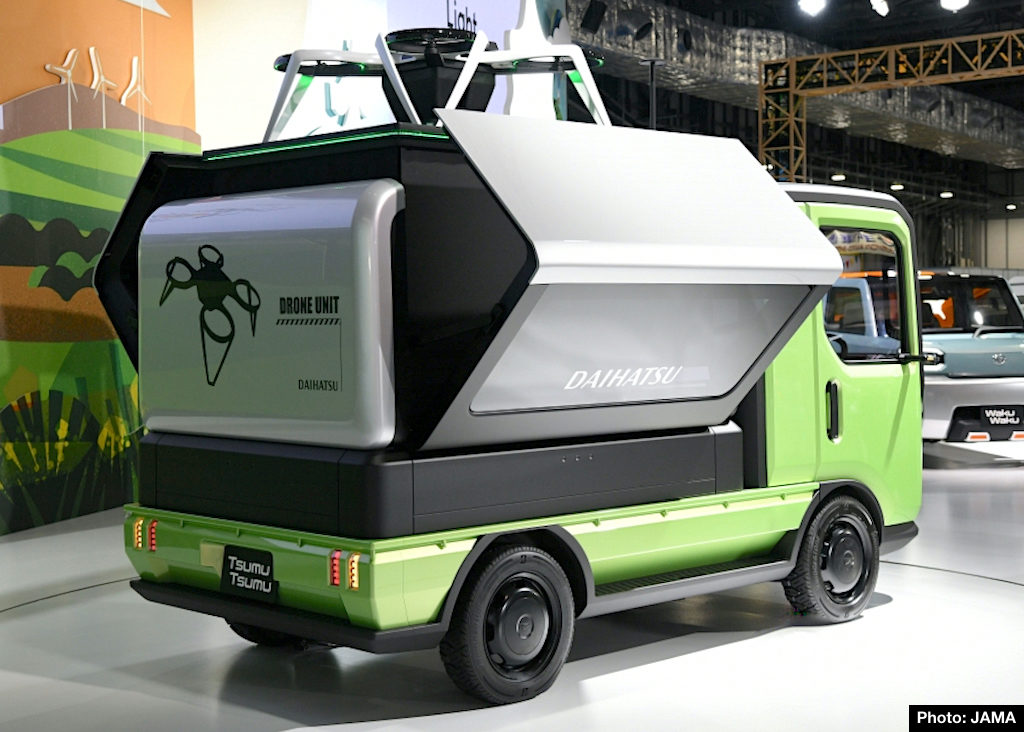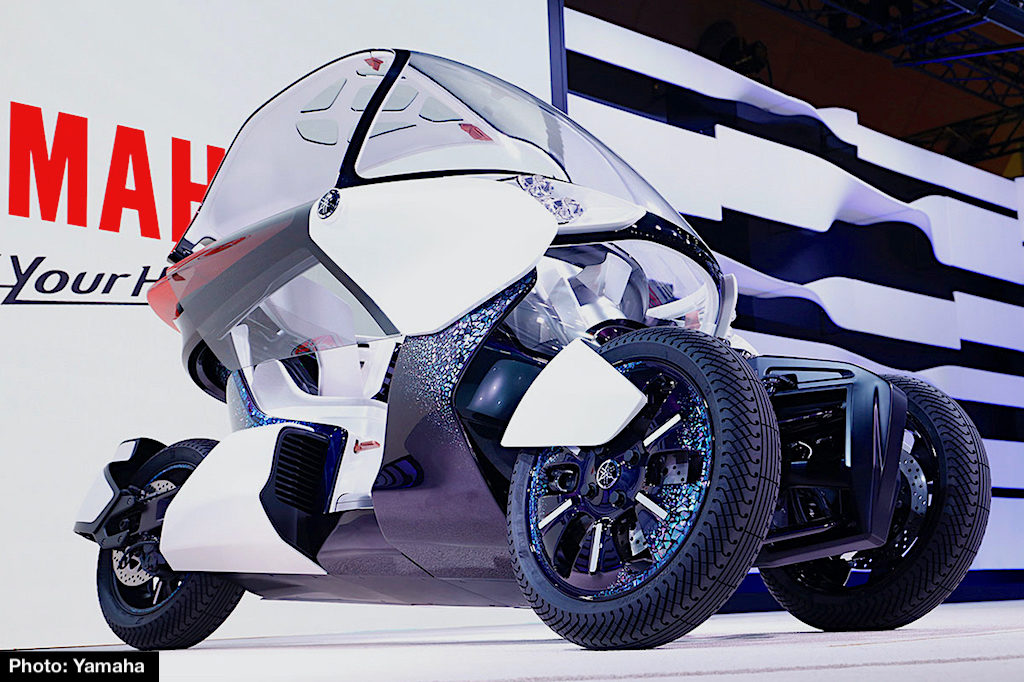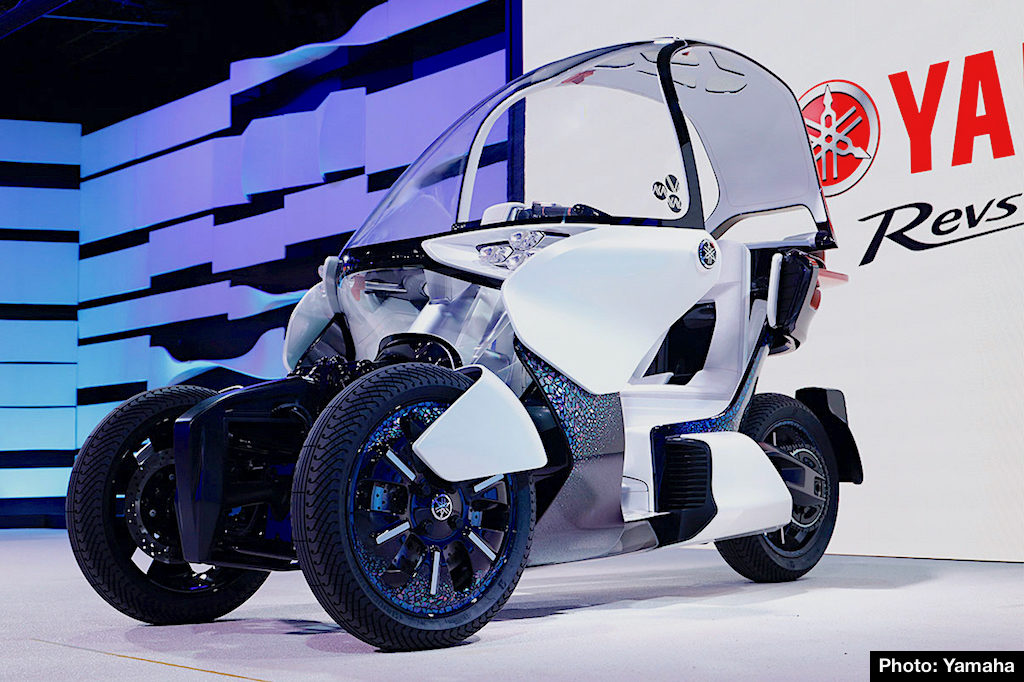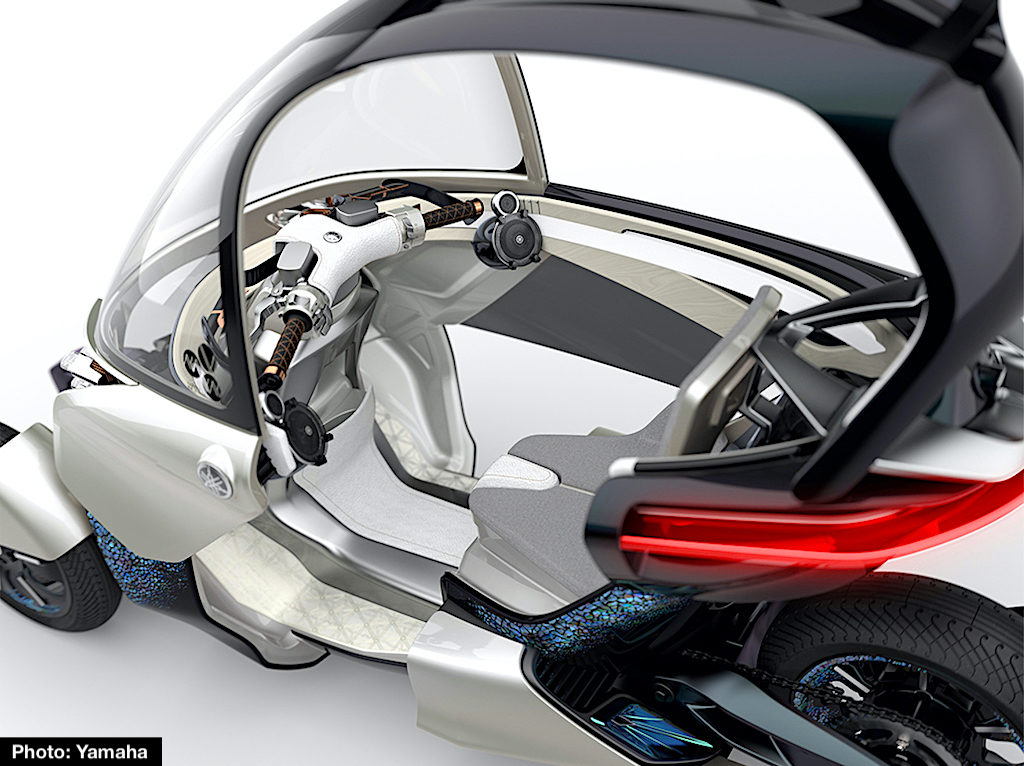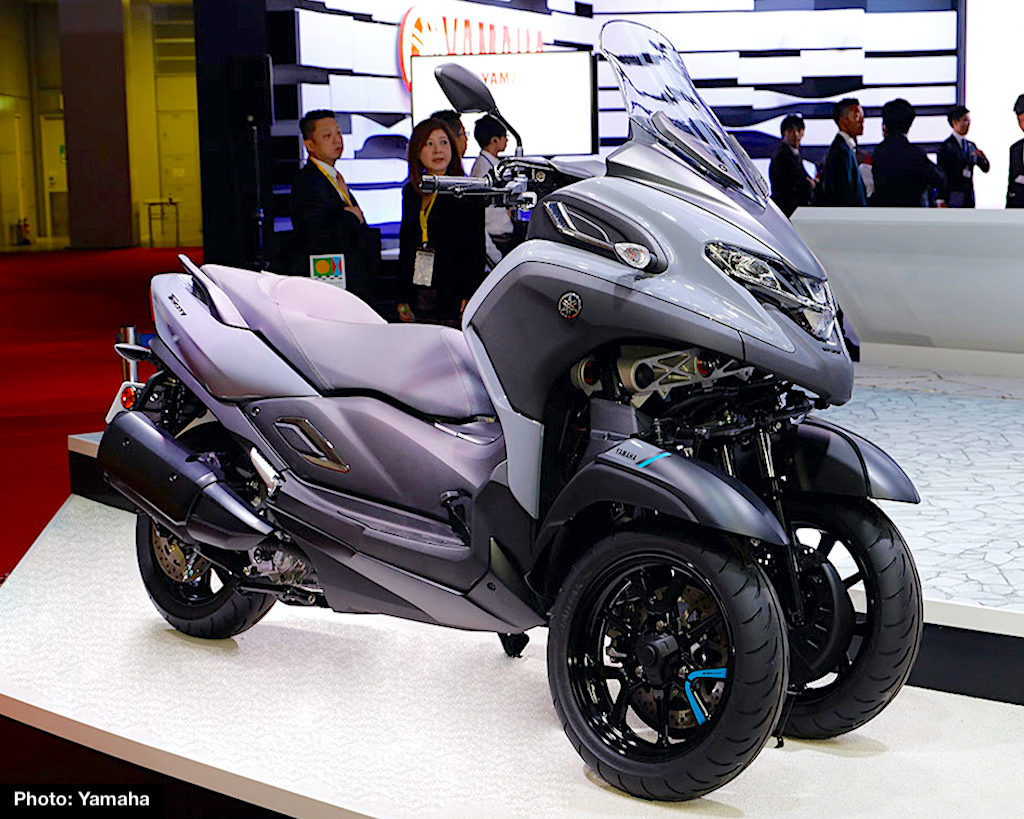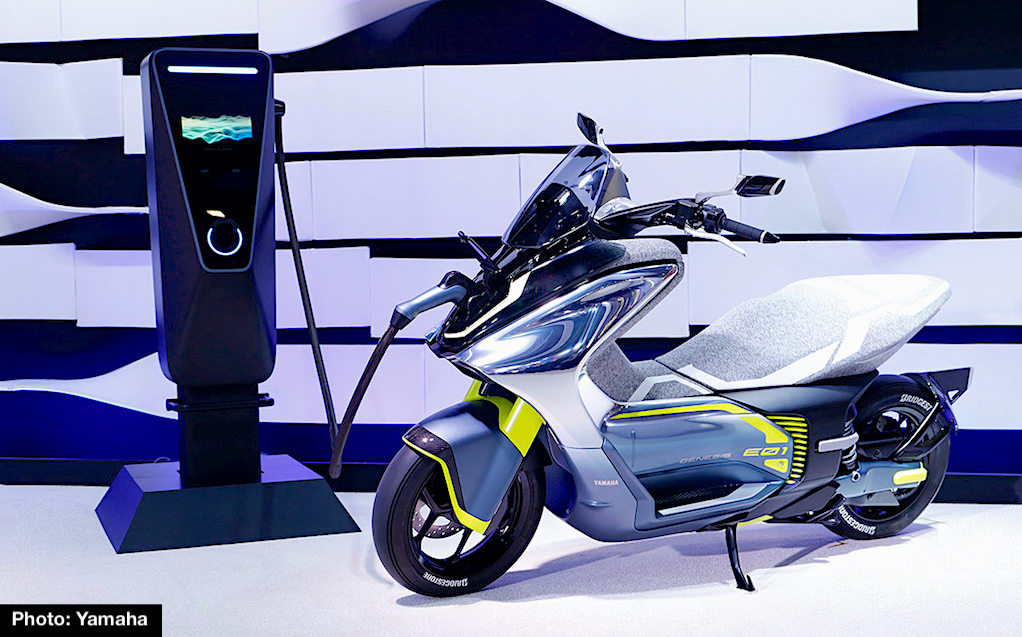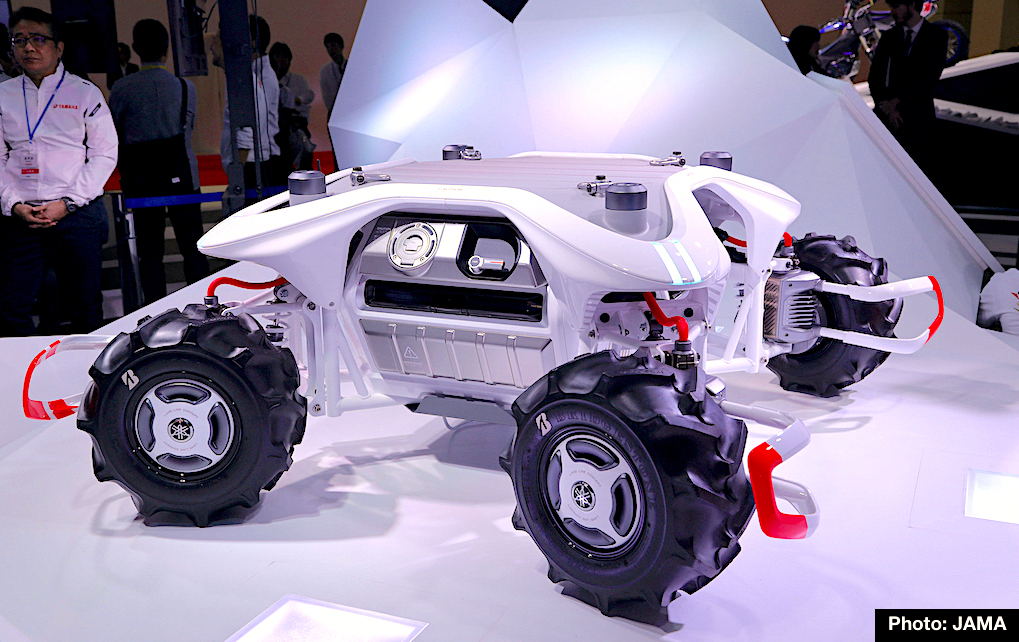By Steve & Tamami Laser
While the Tokyo Motor Show offered the chance to look into the future of mobility, it also gave show goers the opportunity to get behind the wheel of some of today’s exciting new vehicles. Qualified participants signed up to test-drive cars on a public road course that started from the Drive Park area.
Daihatsu put a smile on the faces of drivers and passengers alike with the latest spin on its small roadster called Copen GR Sport. The GR series, co-developed with Toyota Gazoo Racing, features special suspension tuning, along with exterior and interior upgrades including BBS wheels and Recaro sport seats. Copen GR will also be sold by Toyota dealers in Japan.
This story wraps up our three-part series on the 46th Tokyo Motor Show, with a look at concept vehicles and new models from Subaru, Suzuki, Daihatsu and Yamaha.
Subaru
Subaru has been busy revamping its model lineup, and now it’s time to focus on Levorg. A prototype of the next-generation Levorg made its debut in Tokyo, with the production version scheduled to go on sale during mid-2020 in Japan. Levorg switches to the Subaru Global Platform and receives all-new “Dynamic x Solid” styling. While Levorg is sold in other markets, including Europe and Australia, there’s little chance the new model will come to America, where Subaru continues to focus on crossovers.
Levorg gains a new high-definition map and vehicle locator system that utilizes data from GPS and Michibiki (Quasi Zenith Satellite System). “In combination with high-definition map data, the vehicle recognizes the shape of the highway ahead, reduces speed before going into a curve, and assists hands-free driving in traffic congestion,” says Subaru.
Subaru also introduced the “EJ20 Final Edition” prototype WRX STI at the show. While this limited-edition model of 555 units bids farewell to the EJ20 engine, it also likely signals that the end is near for the current WRX STI.
EJ20 Final Edition is finished with WRC-inspired blue paint and rides on gold-painted 19-inch BBS wheels. The car comes to a stop courtesy Brembo monoblock brakes with drilled rotors front and rear.
The EJ20 has been used in an array of Subaru models, from the first Legacy, to WRC endurance racers. The 2.0-liter turbo engine for this EJ20 is balanced (pistons, connecting rods and crankshaft) and so is the clutch and flywheel.
The cabin is fitted with Recaro® front seats with ultra-suede and leather upholstery featuring silver accents and the STI logo. Matching trim is applied to the door panels and center console cover.
Suzuki
With an energized product lineup, Suzuki announced the theme for its exhibit at the Tokyo Motor Show. “Waku Waku Switch for Everyone: Excitement for you, excitement for everyone.” As the brand prepares to celebrate its 100th anniversary in 2020, Suzuki introduced innovative concepts and production models in the automotive, motorcycle, outboard motor and motorized wheelchair segments.
Hanare (above) looks like a cab-forward minibus on the outside, yet Suzuki calls it “an autonomous driving mobile room where everyone can use transportation time and comfortable space effectively. Hanare, which means “detached cottage,” offers a flexible cabin environment via a huge swing-up door. There is no steering wheel or even a traditional driver’s seat. Instead, this flight of fancy has open space for passengers to enjoy, with adjustable couch-style seating. And there’s a huge display screen, rivaling a home entertainment center, on the opposite wall.
Suzuki’s new Waku Spo looks a bit closer to production, yet it’s also billed as a concept. This compact A-segment car, a Plug-In Hybrid Electric Vehicle (PHEV), can transform itself to meet the desires of users.
For example, if drivers need more cargo room, the rear trunk lid retracts and a hatchback-style canopy pops up to take its place. Thanks to the lack of a B-pillar, and a small rear door that slides open minivan-style, its easy to enter the cabin.
The futuristic interior features a transformable dashboard. The driver can opt for a retro look with a large wood-tone dash, or swivel the panel to reveal a widescreen display.
Daihatsu
Daihatsu calls the theme for its display at the Tokyo Motor Show, “Gathering: providing warmth to everyone’s lives.” New concept cars making their premieres were named based on scenarios for people who could potentially use them.
Daihatsu excels in building small vehicles with charisma. WakuWaku (which stands for “excitement”) offers a preview of a potential future mini-crossover vehicle. With styling that reminds us of the departed Honda Element, it’s designed for users with active lifestyles.
In addition to its boxy, rugged good looks, WakuWaku is filled with clever touches. For example, the rear side doors are “hidden,” giving the concept the profile of a sporty two-door. There’s also a hidden storage area in the roof that can be accessed via a swing-up panel. The rear cargo area is covered with hard plastic panels, allowing users to transport wet or dirty gear, such as for skiing, camping, climbing or watersports activities.
IcoIco (say “Eco-Eco”), is a new autonomous public transport concept vehicle. Daihatsu says it “aims to support the free movement of people by providing first-mile and last-mile mobility.” Users seeking a ride could summon IcoIco using a mobile app.
When it arrives, the concept features a retractable ramp that makes it easier for entry and exit of passengers, including wheelchair users. The concept also has a small robot called “Nipote,” designed to provide verbal assistance for mobility lifestyles.
Daihatsu mini-trucks can be found on job sites throughout Japan. TsumuTsumu offers a look at a next-generation model with flexibility and versatility in mind. The cab-forward design makes it easy to maneuver in tight spaces while providing excellent forward visibility.
The cargo bed is designed to adapt for users with different needs. For example, as Daihatsu demonstrated, it could be used as an “agricultural drone base.” Or it could be transformed into a catering truck to bring food and snacks to job sites and neighborhood festivals alike.
Yamaha
With the theme, “There is Greater Joy Yet to Come – ART for Human Possibilities,” Yamaha brought a variety of motorcycles, Leaning Multi-Wheelers (LMW), electric commuter vehicles, and an “unmanned autonomous vehicle solution” to the show.
Yamaha calls the MW-Vision a new concept in personal mobility that uses LMW tech. “It was developed with the aim of bringing to people new Kando from the exhilaration of leaning as one with the machine through corners.”
While LMWs are not new, the concept stretches the envelope with a futuristic cocoon-like body for protection from the elements. It’s also fitted with attitude control technology and reverse drive.
The cockpit offers interactive communication between the user and the vehicle through sound and light, suggesting how “the fusion of robotics and mobility technology could produce forms of mobility more in tune with human sensitivities.” It employs Yamaha’s ViReal™ system of immersive audio technology.
Yamaha has a knack for building three-wheel dream machines. The new Tricity300 concept (above), is a middle-class commuter with LMW tech, including a Blue Core engine and specific LMW steering linkage designed to deliver a “quality commuting experience.”
Yamaha’s new E01 concept is an electric scooter designed for power output comparable to a 125cc model. With its sporty styling and fast-charge capability, the E01 could preview a next-generation fun machine for the young and young-at-heart.
While it looks a bit like a Mars rover, Yamaha’s Land Link Concept is an autonomous vehicle that moves across the earth by itself. Imagined for use in varied terrain, it can sense its surroundings via AI-based image recognition to avoid obstacles. Each of the four wheels can be steered and driven independently for “dexterity to work on tasks as a reliable partner.”
Visit the following links for our additional 2019 Tokyo Motor Show stories:
2019 Tokyo Motor Show Part 1 – Toyota and Lexus Charge Into the Electric Future
2019 Tokyo Motor Show Part 2 – Nissan Ariya, Honda Fit, Mazda MX-30, Mitsubishi MI-TECH
News sources and photos courtesy of Subaru Corp., Suzuki Motor Corp., Daihatsu Motor Co., Ltd, Yamaha Motor Co., Ltd., and the Japan Automobile Manufacturers Association (JAMA)
Note: Features, specifications and launch timing for Japanese-market production models mentioned in this story is subject to change without notice
Story (commentary) © 2019 CarNichiWa.com
